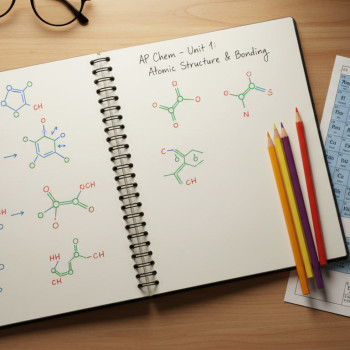AP vs SAT: Math Trajectory From Precalculus and Calculus to SAT Math Readiness
Opening note: why this comparison matters
If you’re a student (or a parent cheering from the sidelines), you likely feel the tug of two big academic currents: AP math classes that push toward college credit and mastery, and the SAT, a single-day standardized challenge that helps open college doors. Both matter but they demand different mindsets, preparation routes, and calendars. This piece is a friendly, practical walkthrough comparing AP (particularly Precalculus/Calculus-focused APs) and SAT Math readiness. Expect clear examples, a few tables that cut through the noise, and realistic plans you can start this week. Along the way, I ll show how targeted, 1-on-1 tutoring like Sparkl s personalized approach can fill learning gaps and accelerate progress.

Big-picture differences: What AP math and SAT math actually measure
At first glance, AP Calculus (AB/BC) and the SAT Math section both look like math tests. But they exist for different reasons.
- AP Math (Precalc / Calculus-focused): Designed to evaluate mastery of a sustained high-school course. AP exams assess conceptual depth, multi-step problem solving, procedural fluency, and often the ability to explain reasoning in written responses (free response questions on APs).
- SAT Math: Measures reasoning, procedural skills, and problem-solving speed under timed conditions. It asks you to apply algebra, some advanced math concepts, and quantitative reasoning to a variety of contexts, often in multiple-choice or grid-in formats.
Put simply: AP asks Can you do deep math over a semester? SAT asks Can you demonstrate problem-solving and quantitative reasoning within a tight time frame?
How classroom trajectory shapes each test
Your course sequence Algebra I Geometry Algebra II Precalculus Calculus creates both content knowledge and habits (like rigorous proof, symbolic manipulation, and modeling) that pay dividends on AP. For the SAT, the same trajectory helps, but the emphasis is on flexible application. A student who has completed Precalculus and Calculus often has the content edge on SAT, but content isn t everything: question familiarity, pacing, and strategic guessing matter too.
Content overlap: Where Precalc/Calc helps SAT Math (and where it doesn’t)
Knowing calculus isn t necessary to answer most SAT Math questions the College Board s SAT Math stays mostly within algebra, some advanced algebra, geometry, and a slice of precalculus (like functions and trigonometry basics). But the thinking habits built in Precalc/Calc are invaluable.
| Skill/Topic | AP Precalc/Calculus Benefit | Value for SAT Math |
|---|---|---|
| Algebraic manipulation | Intensive practice simplifies complex expressions and equations | High many SAT questions rely on neat algebraic moves |
| Function behavior (composition, inverses) | Core in Precalculus and calculus foundation | Moderate to high appears in function and modeling problems |
| Trigonometry | Trigs used deeply in calculus contexts | Moderate basic trig and identities can be tested |
| Limits and derivatives | Central to Calculus | Low seldom needed directly but enhances problem insight |
| Modeling and word problems | AP problems often require multi-step modeling | High SAT tests translation from words to math |
| Spatial reasoning / geometry | Geometry and multivariable ideas in applied settings | High geometry items appear regularly |
Timing and format: training your brain for different constraints
AP exams reward deep work and usually give more time per problem, especially on free response sections. SAT compresses many problems into a limited window, valuing speed and strategic choices.
- AP-style preparation: Slow-cook complex problem solving. Work on written explanations, multi-step proofs, and integrating concepts. Practicing timed sections is useful but secondary.
- SAT-style preparation: Train for pacing, question triage, quick algebraic steps, and smart guessing strategies. Practice full-length timed sections and learn which question types to attack first.
Some students mistakenly try to prepare for both by only doing long-form AP problems; that helps understanding but won t teach timing tactics. Conversely, exclusive SAT drills can erode deep conceptual grasp needed for AP free-response questions. The ideal plan blends both.
Practical roadmap: Layered prep from now until test day
Here s a flexible roadmap that aligns school coursework with test goals. Adjust timelines depending on the student s current level and test dates.
Phase 1 Build foundation (ongoing during Precalc)
- Focus: Algebra fluency, function language, geometry basics, and trigonometric identities.
- Practice: Weekly timed SAT-style problem sets (30 45 minutes) plus untimed AP-style deep-problem days.
- Goal: Smooth, accurate algebraic manipulation and confidence translating word problems into equations.
Phase 2 Cement understanding (when taking Calculus / AP Precalculus)
- Focus: Apply calculus thinking to modeling; hone multi-step problem workflows used in AP free-response items.
- Practice: Alternate full AP FRQ practice with SAT practice sections. Review mistakes carefully for concept gaps.
- Goal: Be able to explain reasoning in writing (AP skill) and solve similar problems faster (SAT advantage).
Phase 3 Targeted sharpening (6 10 weeks before SAT / AP)
- For SAT: Do multiple full-length, timed SATs each week; review errors and create mini-drills for weak patterns.
- For AP: Cycle through past free response questions under exam-like conditions; debrief with rubrics and targeted review.
- Goal: Build stamina, refine exam strategies, and eliminate recurring mistakes.
Sample study-week that balances both goals
This weekly plan assumes a student juggling schoolwork and test prep. It mixes AP-style depth with SAT timing practice.
| Day | Morning/After School | Evening |
|---|---|---|
| Monday | AP class/homework review (focus on proofs and FRQ concepts) | SAT timed section (25 35 minutes) + quick error log |
| Tuesday | Targeted algebra drill (30 minutes) | Untimed AP-style problem (deep work) with written solution |
| Wednesday | Trigonometry or function practice | Short mixed SAT problem set focused on weak topic |
| Thursday | Group study or 1-on-1 tutoring session (Sparkl s personalized session) for tricky concepts | AP FRQ quick-write (30 45 minutes) on timed prompt |
| Friday | Full-length practice test (rotate weekly between SAT and AP sections) | Light review and rest |
| Weekend | Review errors, make concept flashcards, plan for next week | Fun math project: modeling a real-world scenario (e.g., population growth or economics) using calculus/precalc ideas |
How to read your scores and where course sequence matters
AP scores are reported on a 1 5 scale and reflect mastery of course content; colleges may award credit for a 4 or 5 depending on policy. SAT Math scores range (per section) and are used as an admissions data point. If you re taking AP Calculus (AB/BC) and Precalculus in sequence, you ll likely have strong content for both AP success and SAT Math if you actively translate that content into speed and strategy.
Common student profiles and recommended focus
- Content-strong but slow: You can do complex AP problems but get stuck on SAT timing. Focus on timed practice and efficient tactics for commonly tested question types.
- Quick but shaky: You finish quickly but make careless errors or have gaps in deeper concepts. Slow down for accuracy checks, strengthen fundamentals, and practice AP-style justification.
- Balanced: Keep alternating between AP FRQs and SAT timed sections, and refine test strategies for both formats.
Example walkthroughs: two problems, two mindsets
Below are concise examples illustrating how the same mathematical thinking can appear differently on AP and SAT tasks.
Example A Modeling a rate problem
AP-style prompt: Construct a function that models a changing rate (e.g., water filling a tank with a variable inflow rate), find the derivative, and explain the physical meaning of your result. You might show a limit, compute a derivative symbolically, and write a short paragraph connecting math to context.
SAT-style variant: Given a neat algebraic function describing volume over time, answer two multiple-choice questions: one about the volume at a specific time and one about whether the volume is increasing or decreasing at that time. The work is quicker and more tactical.
Example B Trigonometry in context
AP question: Prove an identity or set up an integral that uses trig substitution; show steps and justify each transformation.
SAT question: Use a trig identity or right-triangle reasoning to find an angle or side length and select the right numeric answer. Again, speed and clarity matter more than writing a paragraph.
How personalized tutoring (like Sparkl) fits naturally into this path
Many students progress far faster with a coach who diagnoses weak points, provides tailored drills, and offers accountability. That s where personalized tutoring shines especially when it s focused and flexible. For instance:
- 1-on-1 guidance helps translate deep AP concepts into fast SAT strategies without losing rigor.
- Tailored study plans put practice where it matters most fewer hours, higher impact.
- Expert tutors can walk through AP FRQs step-by-step and then show how the same thinking maps to SAT items.
- AI-driven insights or progress trackers (when used thoughtfully) reveal persistent error patterns and personalize problem sets.
If your goal includes both an AP score that demonstrates mastery and an SAT score that strengthens your application, a targeted mix of classroom learning plus occasional personalized tutoring sessions can be the most time-efficient route.
Practical tips and study hacks
- Master the fundamentals first. Algebraic fluency is the bridge between AP success and SAT speed.
- Keep an error log. Track recurring mistakes those are your highest-return study targets.
- Simulate test conditions periodically. For SAT, practice full-length tests under timed conditions. For AP, recreate free-response timing and answer-writing conditions.
- Do focused mini-drills 15 20 minute targeted sessions on one concept (e.g., function inverses or algebraic fractions).
- Learn to triage during the SAT. Don t let a single hard question consume time you could spend on several solvable ones.
- Use AP free responses as deep warm-ups. They build reasoning muscle that pays off in the SAT s trickier application questions.
Quick reference: What to prioritize by timeline
| Time Until Test | Priority for SAT Math | Priority for AP Math |
|---|---|---|
| 6+ months | Build fundamentals, take diagnostic test, begin weekly timed practice | Follow course sequence, focus on deep understanding, do FRQs occasionally |
| 2 6 months | Increase full-length SATs and focused weak-topic drills | Start regular timed FRQ practice, refine solutions with rubric feedback |
| 0 6 weeks | Peak test condition: frequent full-length practice, pacing strategies, and error correction | Do AP practice under timed conditions, polish written explanations, and revisit core concepts |
Common pitfalls and how to avoid them
- Avoid studying only in one mode. A mix of speed drills and deep problem solving is essential.
- Don t mistake fast for accurate. Rushing without reflecting cements errors.
- Neglecting word problems is risky. Many SAT items test translation from context to math.
- Underutilizing tutoring. A few targeted sessions with an expert can remove months of frustration especially for tricky AP FRQs or persistent SAT weak spots.
Measuring progress: what improvement looks like
Progress shows up in three ways: faster and more accurate problem solving, stronger written explanations on AP FRQs, and more consistent performance under timed conditions. Track these by using timed practice logs, FRQ scoring rubrics, and tutor feedback. If using a personalized program like Sparkl, you ll often see structured progress reports and individualized next steps that keep momentum between sessions.
Final words creating a plan that fits your goals
AP and SAT math are not either/or. Think of AP as the deep training ground that builds long-term mathematical maturity; think of the SAT as the skills showcase that tests speed, accuracy, and smart strategy. If your school trajectory includes Precalculus and Calculus, leverage that content advantage but intentionally translate deep understanding into fast, reliable procedures for the SAT.
Start by diagnosing where you are: take a short diagnostic SAT and an AP-style free response to reveal strengths and weaknesses. Then build a layered plan: fundamentals first, then alternating AP depth and SAT speedwork, and finally, a focused ramp into full-length practice. If you find recurring gaps, targeted 1-on-1 sessions coaching that offers tailored study plans, expert tutors, and data-driven insights can move the needle faster and with less stress.
Math is a craft: consistent, thoughtful practice beats last-minute cramming every time. When you pair strong classroom learning with strategic practice and the occasional personalized tutoring session, you don t just chase scores you gain confidence. And that confidence? It shows up on test day.

Want a next step?
Pick one small action today: take a 25-minute SAT Math section or write one AP-style FRQ under timed conditions. Review every mistake. If a pattern emerges, consider a couple of personalized tutoring sessions to convert those patterns into clear gains. Small, smart steps compound so start where you are and build momentum.
Best of luck on the path from Precalculus and Calculus to SAT mastery. You ve got this.















No Comments
Leave a comment Cancel